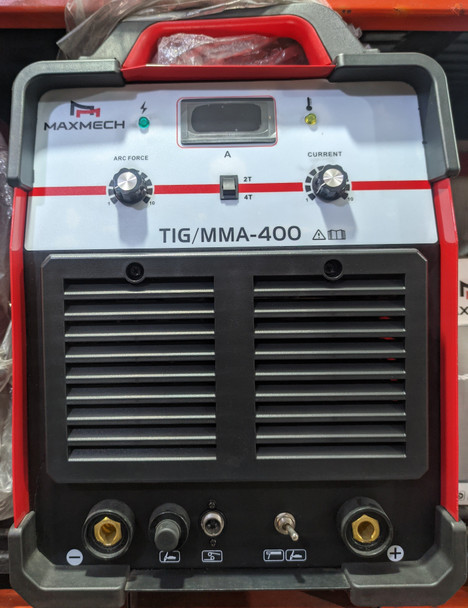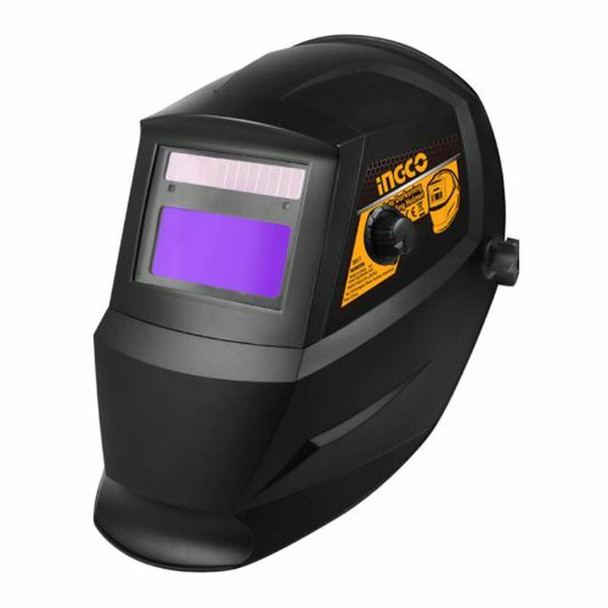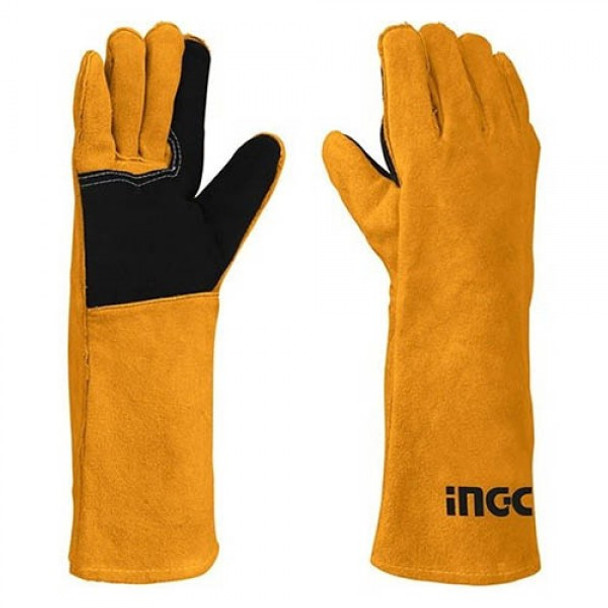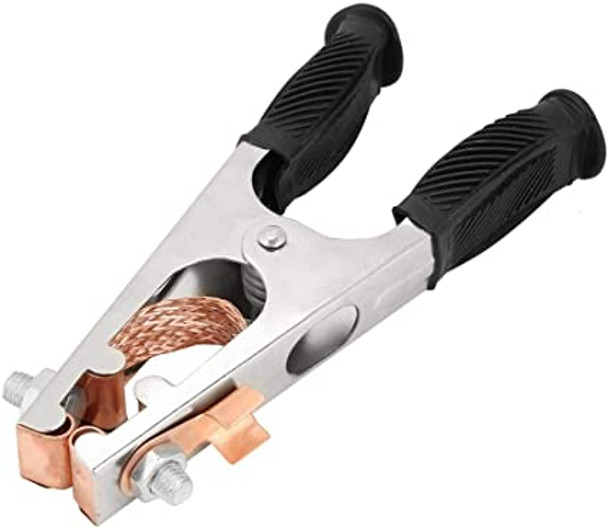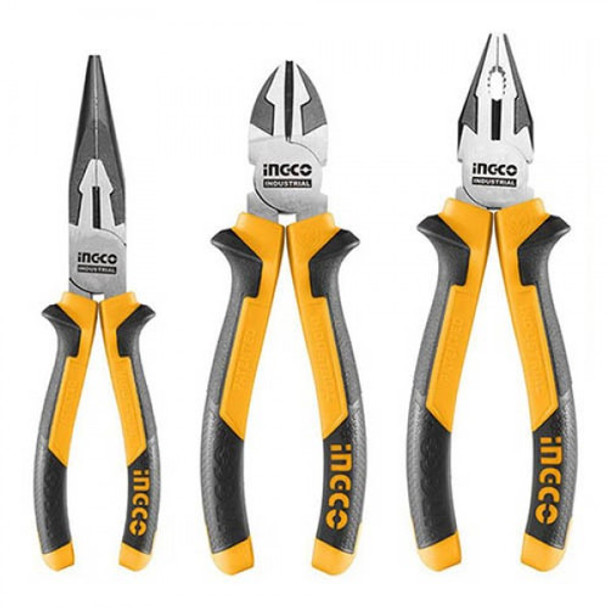5 Must Have Welding Accessories for Efficiency and Safety
Welding accessories have always been an important element used during welding activities serving not only as essential tools in mitigating the inherent dangers of the craft but also as facilitators of precision, efficiency, and safety. These Tools are also available to welders who want to achieve a neat and robust weld, save time, and ensure optimal accuracy. When shopping for welding accessories, never compromise on quality, even if you have to pay a premium. Over time, high - quality equipment ensures maximum cost - effectiveness, as well.
Here is the list of the 5 welding tools and accessories that are the most important, that you will appreciate once you begin to weld. The first essential welding accessory you must have are the safety gears such as welding helmet, welding gloves etc. The primary purpose of any welding helmet is to prevent sparks and flames from scarring your face while you work and prevent damage to the skin and eyes from the heat. They filter all the unwanted UV and IR radiations and let only the visible light pass through – giving full protection to the eyes. An auto-darkening helmet will help in saving time and getting your weld started correctly.
As we delve into welding accessories, this guide aims to provide a comprehensive understanding of their indispensable role, illuminating how these tools are instrumental in elevating both the proficiency and security of welding practices. this exploration seeks to underscore the importance of welding accessories in promoting efficiency, and safety.
Maxmech Inverter Welding Machine TIG/MMA-400
5 Must Have Welding Accessories for Safety
1. Welding helmet
Welding involves high-intensity light, heat, sparks, and spatter that can damage your eyes and skin. A welding helmet is a must-have accessory to protect your eyes from harmful radiation, such as ultraviolet and infrared rays, and prevent eye injuries, such as flash burns, cataracts, and blindness. A welding helmet also shields your face and neck from burns and cuts caused by flying metal particles.
Features to consider when choosing a welding helmet
When choosing a welding helmet, you should consider the following features:
- Lens Type: There are two types of lenses for welding helmets, passive and auto-darkening. Passive lenses have a fixed shade that blocks out most of the light, but you have to flip the helmet up and down to see your work. Auto-darkening lenses automatically adjust the shade according to the brightness of the arc, allowing you to see clearly before, during, and after welding.
- Lens shade: The lens shade determines how dark the lens is when you are welding. The shade should be dark enough to protect your eyes from the arc, but not too dark to impair your vision. The following shade numbers are recommended for different welding processes:
- Gas welding: 4 to 6
- Gas metal arc welding (GMAW) and flux cored arc welding (FCAW): 10 to 13
- Gas tungsten arc welding (GTAW): 8 to 13
- Shielded metal arc welding (SMAW): 10 to 13
- Lens size: The lens size affects the field of view that you have when you are welding. A larger lens size gives you a wider and clearer view, but also makes the helmet bulkier. A smaller lens size reduces the size of the helmet, but limits your vision and may cause eye strain. Choose a lens size that suits your welding needs and comfort level.
- Helmet weight and comfort: The weight and comfort of the helmet are very important, especially if you are welding for long periods of time. A heavy helmet can cause fatigue and headaches, while an uncomfortable helmet can be distracting and compromise your safety. Look for a helmet that is lightweight, well-balanced, and has an adjustable headgear that fits securely on your head.
INGCO Auto Darkening Welding Helmet AHM008
2. Welding gloves
Your hands are exposed to high temperatures, sparks, spatter, and sharp edges when you are welding. Welding gloves are essential to protect your hands from burns, cuts, abrasions, and electric shocks. Welding gloves also provide a better grip and control of your welding equipment and tools.
Features to consider when choosing welding gloves:
When choosing welding gloves, you should consider the following features:
- Material: The most common materials for welding gloves are leather, synthetic, and hybrid. Leather gloves are durable, fire-resistant, and comfortable, but they can also be stiff, heavy, and expensive. Synthetic gloves are lightweight, flexible, and abrasion-resistant, but they can also be less durable, less fire-resistant, and more prone to melting. Hybrid gloves offer the best of both worlds, but they can also be more costly and less consistent in quality.
- Design: The design of the gloves affects their fit, comfort, and functionality. The design elements to consider are:
- Cuff length: The cuff length determines how much of your forearm is protected by the glove. However the longer it is, the less mobility you have. Choose a cuff length that matches the level of protection and mobility that you need.
- Finger style: There are three main finger styles for welding gloves: straight, wing, and curved. Straight fingers are cut and sewn in a straight line, creating a loose and roomy fit. Wing fingers are cut and sewn at an angle, creating a snug and ergonomic fit. Curved fingers are cut and sewn in a curved shape, creating a natural and comfortable fit. Choose one that suits your hand size and shape, as well as your welding technique and preference.
- Lining and padding: The lining and padding of the glove provide insulation, cushioning, and moisture absorption. The lining and padding materials can be cotton, wool, fleece, foam, or gel. Choose a lining and padding that offers the right balance of warmth, comfort, and dexterity for your welding application and environment.
Welding Leather gloves - INGCO HGVW02
3. Protective clothing
Protective clothing in welding, such as welding aprons and jackets, serves as a vital defense against hazards like sparks, spatter, slag, and radiant heat, mitigating the risks of burns and fire hazards during welding tasks. These garments are typically crafted from flame-resistant materials like leather, denim, cotton, or synthetic blends, designed to withstand intense heat and potential splatter encountered in welding processes.
Features to Consider When Choosing Protective Clothing
- Material: Prioritize flame-resistant materials such as leather, denim, or specific synthetic blends engineered to resist flames and heat transfer.
- Functionality: Look for additional features like multiple pockets, strategically placed closures (snaps, zippers, Velcro), or adjustable straps for a secure and customizable fit.
- Compatibility with Underclothing: Ensure the clothing is worn over garments made from natural fibers like cotton or wool to minimize the risk of melting and adhering to the skin under extreme heat conditions. Avoid wearing synthetic fibers like nylon or polyester beneath protective gear.
- Fit and Condition: Opt for well-fitted clothing without loose or frayed edges. Loose garments pose fire hazards and can get caught in welding equipment, leading to potential accidents.
Choosing protective clothing with these considerations in mind is crucial for ensuring personal safety and minimizing risks during welding operations. The right protective gear acts as a reliable shield, enabling welders to work confidently and securely.
Rhino Weld Welders Split Leather Welding Jacket
4. Welding clamp
A welding clamp is a tool that holds your workpieces together and in place when you are welding. A welding clamp is essential for ensuring the accuracy, alignment, and quality of your welds, as well as preventing the workpieces from moving or shifting due to the heat and pressure of the welding process. They also reduces the risk of distortion, warping, or cracking of your workpieces, which can affect the strength and integrity of your welds. A welding improves your safety and efficiency, as it allows you to work with both hands free and without having to worry about your workpieces falling or sliding.
Types of welding clamps and their applications:
There are many types of welding clamps available, each with their own advantages and disadvantages, depending on the size, shape, and material of your workpieces, as well as the type and position of your welds. Some of the most common types of welding clamps are:
- C-clamp: A C-clamp is a clamp that has a C-shaped frame and a screw that tightens or loosens the jaws of the clamp. A C-clamp is versatile and easy to use, as it can clamp various workpieces with different thicknesses and shapes. However, a C-clamp can also be bulky and obstruct your view and access to your welds. It is suitable for clamping flat or slightly curved workpieces, such as plates, bars, or pipes, in a horizontal or vertical position.
- Locking pliers: Locking pliers are pliers that have a locking mechanism that keeps the jaws of the pliers closed and clamped on the workpieces. Locking pliers are convenient and quick to use, as they can clamp and release the workpieces with one hand and without the need for a screw. However, locking pliers can also be limited in their clamping capacity and pressure, and they can damage or mark the workpieces with their serrated jaws. Use them for clamping small or thin workpieces, such as wires, rods, or sheets, in any position.
- F-clamp: An F-clamp is similar to a C-clamp, but it has a longer and narrower frame that allows it to reach deeper and farther into the workpieces. It is also lighter and more compact than a C-clamp, and it can offer more clamping pressure and stability. However, they can also be more expensive and less available than a C-clamp, and it can still interfere with your view and access to your welds. An F-clamp is suitable for clamping large or thick workpieces, such as beams, columns, or panels, in a horizontal or vertical position.
- Corner clamp: A corner clamp is a clamp that has two jaws that are perpendicular to each other and a screw that tightens or loosens the jaws of the clamp. They are designed to clamp two workpieces that form a right angle, such as a corner or a T-joint. A corner clamp is useful for creating accurate and strong joints, such as butt joints, miter joints, or lap joints.
Hellog Welding Ground Clamp 500A, Electroplated Welding
5. Welding respirator
Welding produces fumes, gases, and dust that can be harmful to your lungs and health. Some of the common welding hazards are: - Metal fumes, Gases, Carbon monoxide, Ozone, Nitrogen oxides and Dust. This makes a welding respirator a very important welding safety accessory.
Features to consider when choosing a welding respirator:
A welding respirator is a device that covers your nose and mouth and filters the air that you breathe when you are welding. A welding respirator is essential to protect you from the harmful effects of welding fumes, gases, and dust. When choosing a welding respirator, you should consider the following features:
- Type: There are two types of welding respirators: disposable and reusable. Disposable respirators are single-use masks that are made from a filtering material, such as paper or cloth. They are cheap and convenient, but they can also be less effective, less comfortable, and less durable. Reusable respirators are masks that have a replaceable filter cartridge that can be changed when it becomes clogged or contaminated. Reusable respirators are more expensive and require more maintenance, but they can also offer better protection.
- Rating: The rating of the respirator indicates the level of protection that it provides against different types of particles and contaminants. The rating is based on the size and concentration of the particles that the respirator can filter out. The most common rating system for welding respirators is the National Institute for Occupational Safety and Health (NIOSH) rating, which consists of three letters and a number. The letters indicate the type of particles that the respirator can filter out, while the number indicates the percentage of particles that the respirator can filter out. The letters and numbers are as follows:
- N: Not resistant to oil. This means that the respirator can filter out particles that are not oil-based, such as metal fumes, dust, or pollen.
- R: Resistant to oil. This means that the respirator can filter out particles that are oil-based, such as lubricants, solvents, or paints, for up to eight hours.
- P: Oil-proof. This means that the respirator can filter out particles that are oil-based, such as lubricants, solvents, or paints, for more than eight hours.
- 95: Filters out 95% of the particles.
- 99: Filters out 99% of the particles.
- 100: Filters out 99.97% of the particles.
- Fit: The fit of the respirator determines how well it seals around your face and prevents any leakage of unfiltered air. The fit depends on the size, shape, and design of the respirator, as well as the size, shape, and features of your face, such as your nose, chin, or beard. You should choose a respirator that fits snugly and comfortably on your face, without any gaps or spaces that could allow the entry of unfiltered air.
Dust Mask INGCO HDM07
5 Welding Accessories that promotes Efficiency
1. Welding Work Table with Clamps:
A welding work table with clamps is a surface that provides a stable and secure base for your welding projects. A welding work table with clamps can help you improve your efficiency by:
- Saving time and space: A welding work table with clamps can eliminate the need for multiple tables or stands, as it can accommodate different sizes and shapes of workpieces. A welding work table with clamps can also reduce the clutter and mess in your workspace, as it can store your tools and accessories in built-in drawers or shelves.
- Enhancing accuracy and quality: A welding work table with clamps can ensure that your workpieces are properly aligned and positioned, as it can adjust the height, angle, and orientation of the clamps. It can also prevent your workpieces from moving or shifting during the welding process, as it can apply the right amount of pressure and force to the clamps.
- Increasing safety and comfort: A welding work table with clamps can protect you from injuries and hazards, such as burns, sparks, spatter, or electric shocks, as it can isolate your workpieces from the ground or other conductive materials. It can also improve your posture and ergonomics, as it can allow you to work at a comfortable level and distance from your workpieces.
2. Chipping hammer and wire brush
A chipping hammer and a wire brush are tools that are used to remove the slag, spatter, and scale that are formed on the surface of your welds after the welding process. They are important for post-weld cleanup, as they can help you:
- Improve the appearance and aesthetics of your welds, as they can remove the unwanted and unsightly residues that can mar the finish and shine of your welds.
- Inspect and evaluate the quality and integrity of your welds, as they can expose the underlying metal and reveal any defects, such as cracks, porosity, or undercutting, that can affect the strength and durability of your welds.
- Prepare and condition your welds for further processing, such as grinding, polishing, painting, or coating, as they can smooth and clean the surface of your welds and improve the adhesion and performance of the subsequent treatments.
Choosing the right chipping hammer and wire brush: When choosing a chipping hammer and a wire brush, you should consider the following factors:
- Material: The material of the chipping hammer and the wire brush should match the material of your welds, as different materials have different hardness and resistance to abrasion and corrosion. For example, if you are welding steel, you should use a steel chipping hammer and a steel wire brush, as they can effectively remove the slag and spatter without damaging or contaminating the welds. However, if you are welding aluminum, you should use a brass or bronze chipping hammer and a brass or bronze wire brush, as they can prevent the formation of galvanic corrosion.
- Size and shape: The size and shape of the chipping hammer and the wire brush should suit the size and shape of your welds, as well as your personal preference and comfort. For example, if you are welding small or narrow welds, you should use a small or slim chipping hammer and a small or narrow wire brush, as they can access and reach the tight and hard-to-reach areas of your welds.
- Handle and grip: The handle and grip of the chipping hammer and the wire brush should provide a comfortable and secure hold, as well as a good balance and control, of the tools. For example, if you are welding for long periods of time, use a chipping hammer and a wire brush that have ergonomic and cushioned handles and grips, as they can reduce the fatigue and strain on your hands and wrists.
Wire Cup Brush INGCO WB11001
3. Angle grinder
An angle grinder is a power tool that has a rotating abrasive disc that can cut, grind, sand, polish, or sharpen various materials, such as metal, wood, or stone. An angle grinder is versatile in preparing and finishing welds, as it can perform the following tasks:
- Cutting: An angle grinder can cut through metal with ease and precision, using a metal cutting disc or a diamond cutting disc. They can help you prepare your workpieces for welding, by cutting them to the desired size and shape, or by making notches or grooves for better fit and penetration. An angle grinder can also help you finish your welds, by cutting off any excess or unwanted metal, such as tabs, tacks, or rods, or by making adjustments or corrections to your welds.
- Grinding: An angle grinder can grind away metal with speed and power, using a metal grinding disc or a flap disc. Helping you prepare your workpieces for welding, by grinding them to remove any rust, paint, or dirt, or by beveling or chamfering the edges for better fusion and strength.
- Sanding: An angle grinder can sand metal with finesse and detail, using a sanding disc or a flap disc. An angle grinder can help you prepare your workpieces for welding, by sanding them to create a rough or textured surface, or by deburring or rounding the edges for better appearance and safety.
- Polishing: An angle grinder can polish metal with shine and luster, using a polishing disc or a buffing pad. They can help you finish your welds, by polishing them to enhance the finish and shine of the metal, or by applying a protective or decorative coating, such as wax, paint, or chrome, to the welds.
Key features and safety considerations: When using an angle grinder, you should consider the following key features and safety considerations:
- Power and speed: The power and speed of the angle grinder determine how fast and how well it can cut, grind, sand, or polish metal. Choose an angle grinder that has enough power and speed for your welding needs, but not too much that it can overload or overheat the tool.
- Disc size and type: The disc size and type of the angle grinder determine the size and type of the material that it can cut, grind, sand, or polish. The disc size and type of the angle grinder are measured by the diameter and the material of the disc, respectively. Pick an angle grinder that has the right disc size and type for your welding project, and you should also have spare discs in case of wear or damage.
- Handle and guard: The handle and guard of the angle grinder provide a comfortable and safe grip and protection of the tool. The handle and guard of the angle grinder are usually adjustable and removable, depending on your preference and convenience. The handle of the angle grinder you choose should be ergonomic, cushioned snd sturdy, to reduce the fatigue and vibration on your hands and wrists.
Safety precautions: An angle grinder is a powerful and dangerous tool that can cause serious injuries and damages if not used properly and safely. You should follow these safety precautions when using an angle grinder:
- Wear appropriate personal protective equipment (PPE), such as gloves, goggles, ear plugs, mask, and apron, to protect yourself from the heat, noise, dust, and flying particles that are generated by the tool.
- Check the condition and compatibility of the tool and the disc, and make sure that they are clean, sharp, and securely attached, to prevent any malfunction or breakage that can cause accidents or injuries.
- Use the correct disc and technique for the material and the task, and do not force or overload the tool.
DongCheng Angle Grinder DSM125A
4. Welding Pliers
Welding pliers are versatile tools that offer a range of functionalities to assist welders in various tasks. These specialized pliers are designed with features tailored to the needs of welders, making them an essential accessory in any welding toolkit.
Functions and Utility:
Welding pliers typically encompass several functions in one tool, including:
- Nozzle Cleaners: Equipped with small, pointed ends specifically designed to remove spatter and debris from welding nozzles, ensuring unobstructed gas flow for optimal welding performance.
- Wire Cutters: Featuring hardened cutting edges capable of cleanly trimming welding wires to precise lengths, enabling efficient wire changes and reducing wastage.
- Electrode Holders: Some welding pliers include grooved sections or grips intended for securely holding electrodes during welding setup or adjustments.
- Grip and Hammer Surfaces: Certain models integrate textured surfaces or hammering areas for grip and minor hammering tasks, consolidating multiple functionalities in a single tool.
Advantages in Welding Efficiency:
Welding pliers streamline the welding process by eliminating the need for multiple tools during welding tasks. They facilitate quick adjustments, cleaning, and maintenance, enabling welders to focus more on the welding process itself, thereby increasing efficiency and productivity.
3Pcs Pliers Set INGCO HKPS28318
5. Welding magnets
Welding magnets are magnets with extremely strong magnetic fields that make great tools for the welding process. They can stick to all metal surfaces and can hold objects at angles of 45, 90, and 135 degrees.
Welding magnets can help you improve your efficiency by:
- Saving time and effort: Welding magnets can eliminate the need for multiple clamps or screws, as they can hold your workpieces together and in place with one simple motion. They also reduce the clutter and mess in your workspace, as they can keep your tools and accessories organized and within reach.
- Enhancing accuracy and quality: Welding magnets can ensure that your workpieces are properly aligned and held in place, especially for angle or corner welds.
- Increasing safety and comfort: Welding magnets can protect you from injuries and hazards, such as burns, sparks, spatter, or electric shocks, as they can isolate your workpieces from the ground or other conductive materials. Welding magnets can also improve your posture and ergonomics, as they can allow you to work at a comfortable level and distance from your workpieces.
When choosing welding magnets, you should look out for the following factors:
- Material: The material of the welding magnets should match the material of your workpieces, as different materials have different hardness and resistance to abrasion and corrosion. For example, if you are welding steel, you should use steel welding magnets, as they can effectively hold the steel without damaging or contaminating it.
- Size and shape: The size and shape of the welding magnets should suit the size and shape of your workpieces, as well as your personal preference and comfort. For example, if you are welding small or narrow workpieces, you should use small or slim welding magnets, as they can access and reach the tight and hard-to-reach areas of your workpieces.
- Handle and grip: The handle and grip of the welding magnets should provide a comfortable and secure hold, as well as a good balance and control, of the magnets. For example, if you are welding for long periods of time, you should use welding magnets that have ergonomic and cushioned handles and grips, as they can reduce the fatigue and vibration on your hands and wrists.
Conclusion
Welding accessories play an indispensable role in enhancing both the efficiency and safety of welding practices. As highlighted, five must-have welding accessories have been outlined: the welding helmet, welding gloves, protective clothing, welding clamp, and welding respirator. These items are fundamental for safeguarding against the inherent dangers of welding and ensuring precision, accuracy, and comfort during welding operations.
It's crucial to emphasize the synergy between efficiency and safety in welding. Quality accessories not only contribute to a seamless workflow but also significantly reduce the risk of potential hazards, such as eye injuries, burns, and exposure to harmful fumes. The incorporation of high-quality safety gear, like welding helmets with appropriate lens shades and auto-darkening features, along with durable gloves and protective clothing, not only elevates efficiency but also safeguards against the inherent risks associated with welding.
Investing in top-notch welding accessories is an investment in a successful welding experience. Though the upfront cost might be higher, the long-term benefits in terms of increased productivity, reduced downtime, and ensuring the welder's safety far outweigh the initial investment. Hence, never compromise on the quality of these accessories, as they are pivotal in not only streamlining operations but also in ensuring a secure and productive welding environment.
In essence, by prioritizing the acquisition of essential welding accessories and recognizing the crucial balance between efficiency and safety, welders can significantly enhance their overall performance, achieve superior results, and ensure a rewarding and secure welding journey.


